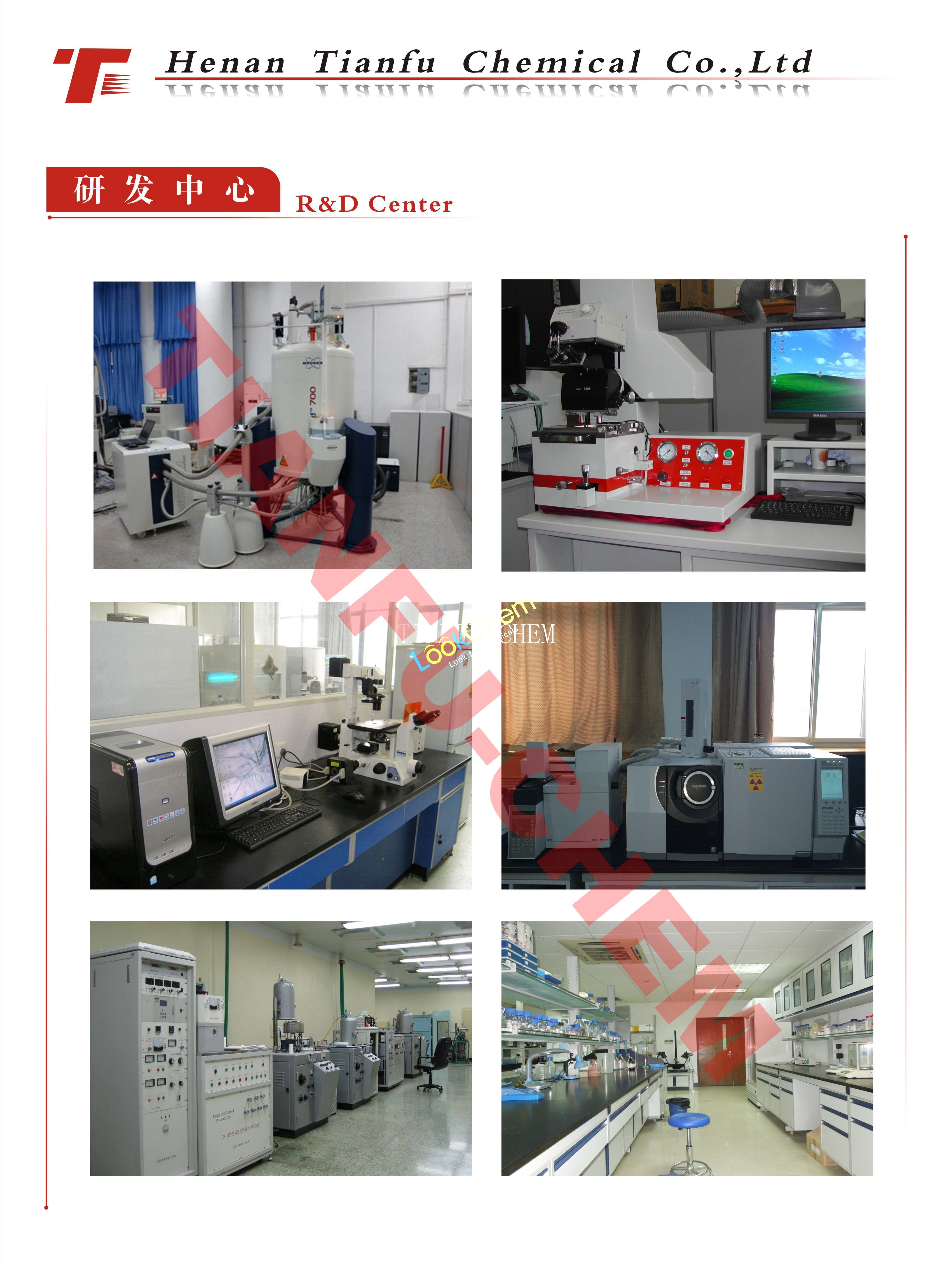- Min.Order :1 Kilogram
- Purity: 99%
- Payment Terms : L/C,T/T
Keywords
103060-53-3 Daptomycin C72H101N17O26
Quick Details
- Appearance:white powder
- Application:pharma
- PackAge:as clients needs
- ProductionCapacity:1|Metric Ton|Day
- Storage:RT
- Transportation:sea
Superiority:
Our company was built in 2009 with an ISO certificate.In the past 6 years, we have grown up as a famous fine chemicals supplier in China and we had established stable business relationships with Samsung,LG,Merck,Thermo Fisher Scientific and so on.Our main business covers the fields below:
1.Noble Metal Catalysts (Pt.Pd...)
2.Organic Phosphine Ligands (Tert-butyl-phosphine.Cyclohexyl-phosphine...)
3.OLED intermediates (Fluorene,Carbazole,Boric acid...)
4.Customs Synthesis
Our advantage:
1. Higest quality and good package
2.Fast delivery
3.Better payment term
4.Fast response to customer within 6 hours
5.Good business credit in Europe ,US ,Japan ,Korea
Anyway ,if you need any chemicals from China ,Henan Tianfu can help you

Details:
Daptomycin Chemical Properties
Melting point 202-204 C
Fp 87℃
storage temp. Store at -20°C
solubility methanol: soluble5mg/mL
color colorless to faint yellow
λmax 260nm(EtOH)(lit.)
Merck 14,2823
Safety Information
RTECS HB5626000
Toxicity LD50 i.v. in mice: 600 mg/kg (Debono)
MSDS Information
Daptomycin Usage And Synthesis
Antibiotic Daptomycin is a kind of cyclic lipopeptide antibiotics with novel structure. It is extracted from the Streptomyces fermentation broth. It was discovered by Eli Lilly Company in the 1980s, and successfully developed in 1997 by Cubist Pharmaceuticals. It not only having a novel chemical structure but also has mode of action which is different from any antibiotic approved before: it inhibits cell by disrupting the transport of amino acids through cell membrane, thereby blocking the cell wall peptidoglycan biosynthesis and changing the nature of the cell membrane. It can destroy the bacterial cell membrane function in many aspects, and quickly kill gram-positive bacteria. In addition to the role of taking effect on most clinically relevant gram-positive bacteria, more importantly, Daptomycin has a potent efficacy in treating isolated strains which have shown signs of resistance to methicillin, vancomycin and linezolid. This property is of great clinical significance to patients suffering from severe infection.
In September 2003, the US Food and Drug Administration had approved for the first time that daptomycin could be applied for the treatment of severe skin infections. In March 2006, it was approved for treating infectious diseases.
In January 2006, it is approved by European Commission for the treatment of certain complicated skin and soft tissue infections caused by gram-positive bacteria.
On September 6, 2007, Cubist Pharmaceuticals announced that the European Union has approved its antibacterial drug, Cubicin for the treatment of right heart endocarditis caused by Staphylococcus aureus infections and complicated skin and soft tissue infection related disease

You Might Also Like
-
25377-73-5 DODECENYLSUCCINIC ANHYDRIDE
CAS NO:25377-73-5
-
High Quality N,N'-(decane-1,10-diyldi-1(4H)-pyridyl-4-ylidene)bis(octylammonium) dichloride Octenidine dihydrochloride 70775-75-6
CAS NO:70775-75-6
-
High Quality Diethyl malonate 105-53-3 In Stock Supply
CAS NO:105-53-3
-
2378-02-1 PERFLUORO-TERT-BUTANOL 99%
CAS NO:2378-02-1
-
2926-29-6 Sodium trifluoromethanesulfinate 99%
CAS NO:2926-29-6
-
CAS 621-27-2 3-N-PROPYLPHENOL
CAS NO:621-27-2
Related Searches
About|Contact|Cas|Product Name|Molecular|Country|Encyclopedia
Message|New Cas|MSDS|Service|Advertisement|CAS DataBase|Article Data|Manufacturers | Chemical Catalog
©2008 LookChem.com,License: ICP
NO.:Zhejiang16009103
complaints:service@lookchem.com Desktop View